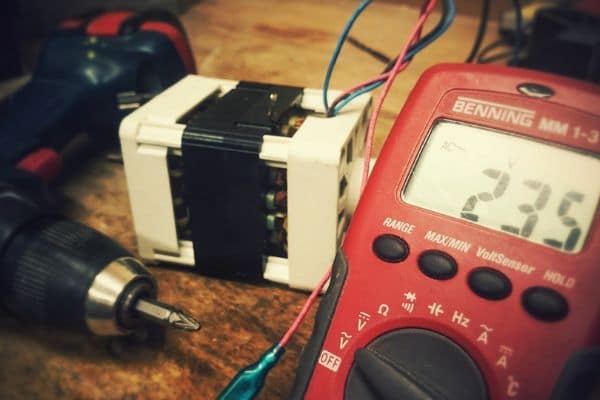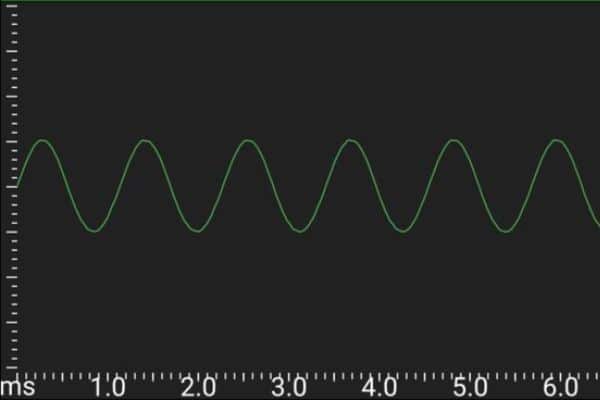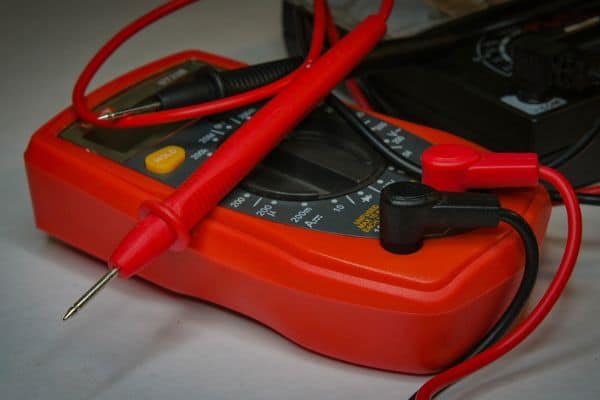
If you’re planning on purchasing your first clamp meter or multimeter, or upgrading from your old model, you’re probably wondering, what is RMS and TRMS?
Typically always mentioned on specifications and advertising blurbs for electrical testing equipment, this seemingly incomprehensible metric can be confusing for novice and amateur circuit scrutinizers.
However, grasping the difference between these two ratings is crucial when purchasing your multi or clamp meter. Consider this article your complete 101 — giving you all the info you need to make an informed choice.
What Does TRMS and RMS In Multimeters Mean?
RMS — Root Mean Square
TRMS — True Root Mean Square
When you apply the multimeter or clamp meter testing probes to your target circuit, a clever system of digital to analog converters, resistors, and microprocessors scrutinize the electrical flow and deliver a reading on the in-built LCD screen. How the voltage or current is internally calculated is via one of two methods — RMS or TRMS.
Consider it similar to measuring the length of a pencil. You could use a plastic ruler or digital calipers — while they will provide very similar results, the calipers will provide a more accurate length.
And that’s the same as RMS and TRMS — RMS is not as precise as TRMS.
That may be all the info you need when choosing your clamp or multimeter. If that’s the case, and you’re not interested in the physics and math stuff — just head straight down to Do I Need an RMS or TRMS Multimeter below.
However, if you’re a data nerd, or just want to mentally punish yourself, here comes the technical talk.
Oh, but just before we get going, a quick note.
In the following explanatory sections, I will be explaining RMS and TRMS with reference to calculating AC voltage. The principles are identical for determining AC current — but to save my poor fingers from typing both, and you from repeatedly reading the same two words, I’ve kept it simple by just talking about volts.
Root Mean Square Calculation

Giacomo Alessandroni, CC BY-SA 4.0, via Wikimedia Commons
As you can see, there are peaks and troughs. However, the waveform is a constant shape — known as a sinusoidal wave. And, when a multimeter calculates voltage with the RMS method, it only uses the peak readings (the pointy bits), through the following formula:
VRMS = VPEAK ÷ √2
Or verbally, the Root Mean Square voltage of a sinusoidal wave is equal to the peak voltage divided by the square root of two.
This delivers you an accurate measurement of the voltage of your circuit or electrical device. However, life is never that simple.
True Root Mean Square Calculation
While ideal in a perfect world, voltage waveforms more typically look like this:

Phoenix7777, CC BY-SA 4.0, via Wikimedia Commons
As you sit reading this article, you’re surrounded by it. It’s coming from the battery of your cell phone, the power transformer in your laptop, the hot plasma in your fluorescent lighting, and the vibrations from your wife’s personal ‘massager.’ Sometimes, it’s so extreme you can actually hear it — for example, the humming from overhead electrical cables.
The problem is, this noise becomes bored and lonely — a bit like a guy in a marriage. And, like the frustrated husband, it looks to hook up with someone or something else for additional fun.
Through a process known as coupling, these electrical signals penetrate third parties through:
- Capacitive coupling.
- Inductive coupling.
- Galvanic coupling.
- Radiofrequency coupling.
This can occur without direct contact — a bit like a married guy sexting a young floozy. And of course, this causes problems. The noise completely wrecks the perfect sine waves of your target circuit, making the once smooth ups and downs into more staggered and uneven peaks.
If you were to use the standard RMS formula, the interference would mean an inaccurate voltage reading. However, TRMS multi and clamp meters use the following equation:
VTRMS = √(V1 2+ V2 2+ V3 2+ V4 2……+ V𝑥, 2) ÷ n
Verbally, wait for this, the True Root Mean Square of a non-sinusoidal wave equals the square root of the sum of the squares of a determined number of voltages divided by that number.
In layman’s terms, it takes a heck of a lot of readings across the wave and finds the average.
Therefore, TRMS technology makes the (correct) assumption that the voltage waveform in a circuit can never be perfect due to electrical interference (unless under laboratory conditions) and therefore provides a more precise reading than the RMS method.
Do I Need an RMS or TRMS Multimeter?

The answer is…it depends on your projects.
For the majority of casual use home applications, an RMS multi or clamp meter is sufficient. Jobs that involve, for example, checking the voltage or current draw of batteries, investigating circuit continuity, or scrutinizing resistance don’t demand incredible exactitude.
However, in projects that require accuracy, such as dealing with electronic pulses or microchips, you need a TRMS unit.
Typical applications include troubleshooting:
- Variable frequency drive motors.
- Air conditioning systems.
- Refrigeration equipment.
- Electronic ballasts.
- Heating systems.
- Computers, laptops, and cell phones.
- Solid-state semiconductors.
My guides to multimeters and clamp meters, and the concomitant in-depth reviews, all indicate whether the tool is RMS or TRMS.
Bear in mind that in many circumstances, especially with respected budget manufacturers such as Klein Tools, you can get your hands on a TRMS electrical tester for just a few dollars more than a standard RMS unit. Furthermore, most of the premium brands, such as Fluke, only manufacture TRMS machines.
Hence, if you can afford it, I’d suggest opting for a TRMS machine where possible. As clamp meters and multimeters usually provide many years of trouble-free use — you’re covering yourself for future accuracy even if you don’t require it with your current projects.
Conclusion
You’re now an expert on RMS and TRMS!
Thankfully you don’t need to memorize the equations, remember the formulas, or complete any complex mathematical sums yourself — multimeters and clamp meters do it all for you.
Just decide whether your projects demand the precision of TRMS or not — and choose a machine that’s suitable for your present and future jobs.
I hope you enjoyed this What Are TRMS and RMS article — if so, please feel free to share! It was important for me to explain that these technological concepts aren’t that complicated — and shouldn’t be confusing when making a multimeter or clamp meter purchase.










